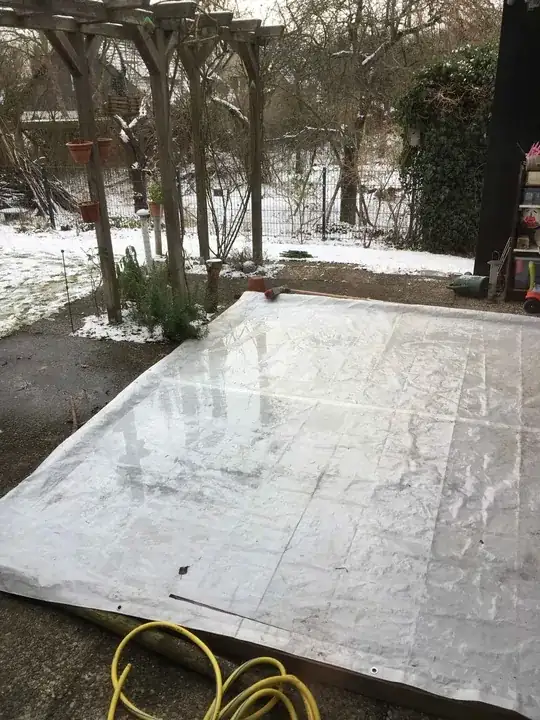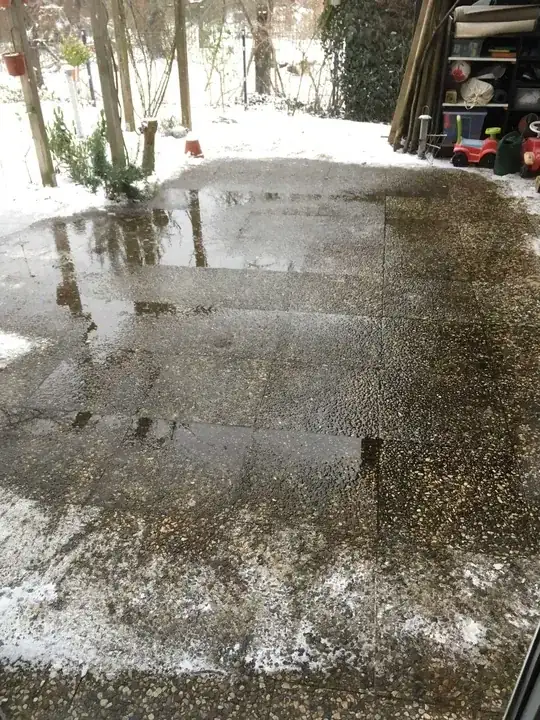(First question here on physics, hope it is OK)
Since it is getting cold here in Berlin, Germany and temperatures are falling below the freezing point, we want to make a little ice rink in our back yard (for regular shoes, we just want to slide over the water).
My question is: should I
- do it layer by layer: fill the plastic with just a bit of water, wait it for it to get frozen, and fill a bit more, wait for the next freezing and keep on filling and waiting in small amounts until the level is heigh enough?
Or should I
- all in once: fill the plastic with enough water and wait (no intermediate steps).
Or perhaps another way?
My goal is to have a solid layer of ice (about 1-2cm - 1/2 inch), not just the top being frozen.
The water from the tap is rather warm, currently about 14°C, probably a bit cooler when I take more than just a (10 liters) bucket.
Edit a day later: I can now report back. Thank you for all the answers. I have filled the plastic with layers of water, waited for it to freeze and then filled another layer and so on.
@Andrew I was thinking about doing the experiment a second area with the other method, but I don't have the same conditions twice so I could not compare each method.
It is hard for me to accept the "right" answer. The "puddle" is frozen, it is a few degrees below 0°C.
Next time I do it, I try without the plastic at the bottom. There are some air bubbles below the plastic and that breaks the ice when sliding. When the (solid) ground is cold enough, the water will freeze anyway.
Edit (2)
The plastic bottom was crap. The ice brake (way too thin) and was not slippery at all. So the next attempt is to remove the plastic and get the ice on the stone floor, layer by layer. (I assume it is getting off-topic now).

